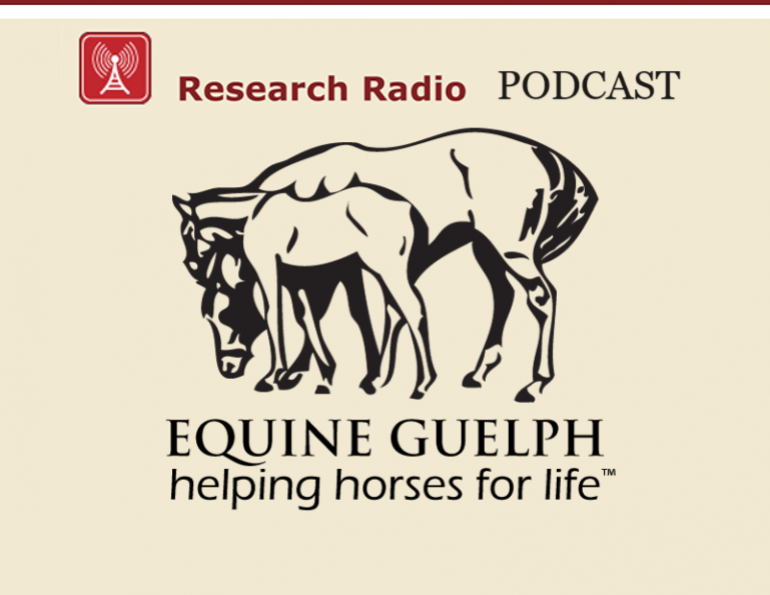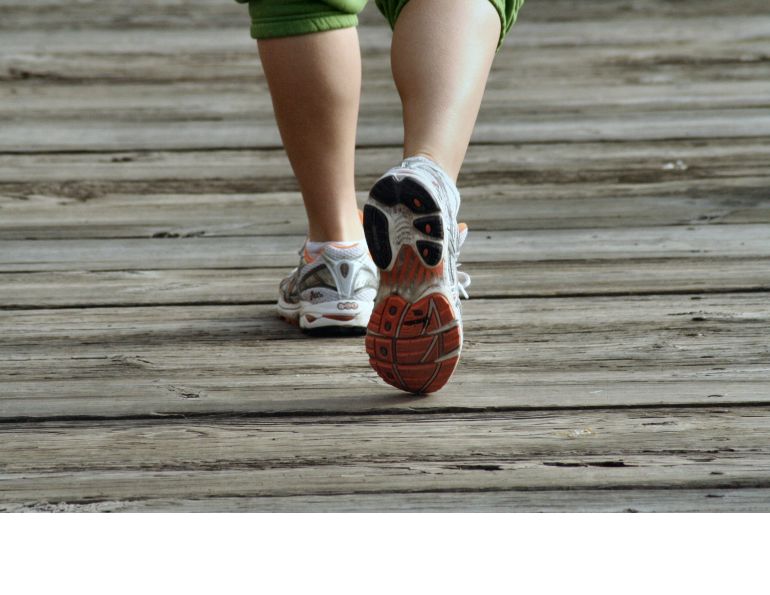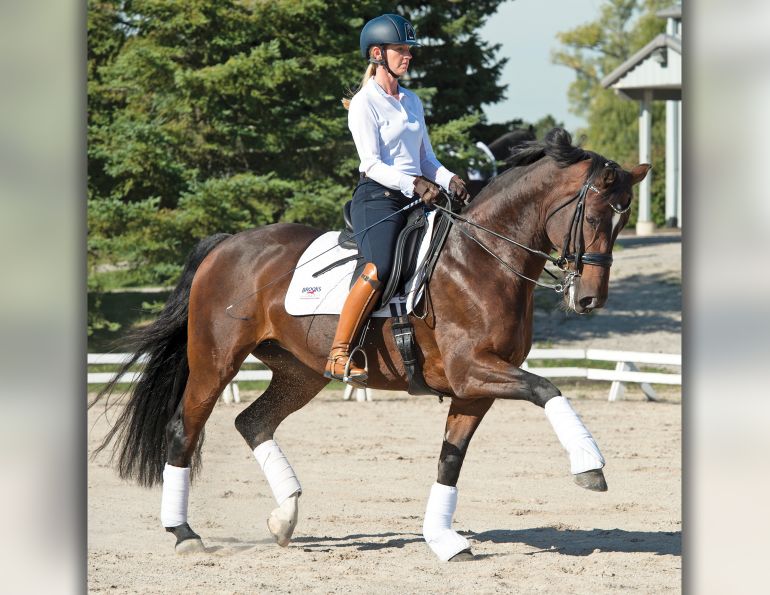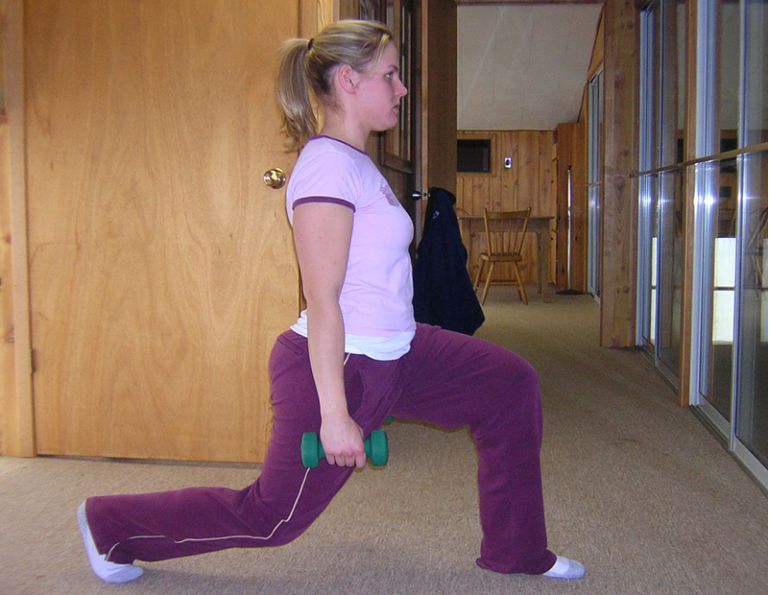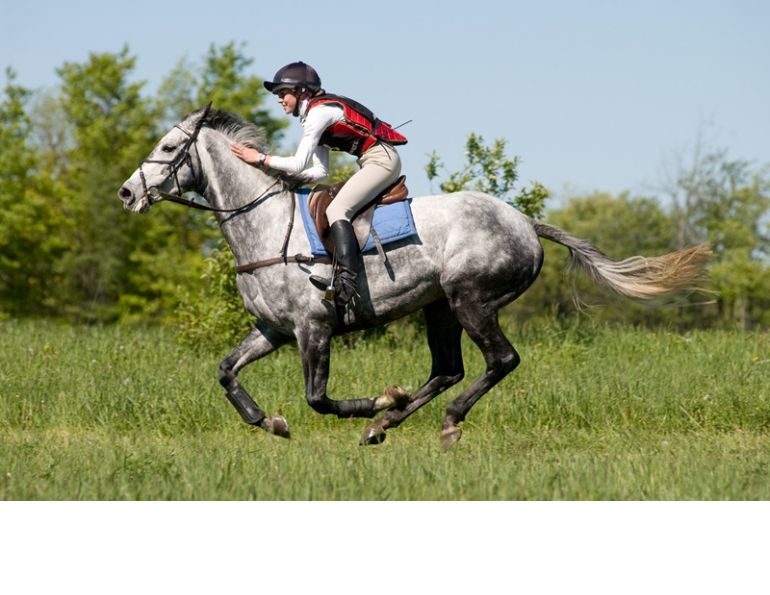By Heather Sansom
Finding time to exercise can be a challenge: farm chores, yard work, summer vacations, competition, you name it, it’s on your plate. Unexpected downtime due to back injury or strain would really put a kink in your summer plans.
If you are competing, you have a lot invested in every minute you spend under a judge’s eye. The additional fatigue created by the preparation involved in simply arriving at the show grounds places more demands on your body than your regular riding routine. Your fitness level for this added demand can make all the difference between placing well or not at all.
Whatever your discipline, the suppleness and strength in your back is a big factor in your posture, performance, and ability to stay injury free and stay in the saddle. For most people, the fact that we do most tasks in front of our bodies means back strength is often not sufficiently addressed in fitness programs — or not addressed at all if you have no fitness program. This problem is especially true among riders with busy schedules, who have even less time for personal fitness. If you are a female rider, you have an additional need to spend time training your back because nature does not equip women with the same ratio of upper body strength. This takes what I call deliberate acts of exercise.
Simple daily exercises and stretches can help keep your back both strong and supple to help you avoid back strain and injury and improve your riding. Photo: Robin Duncan Photography
If you are male and over 45, you need to do this as well. After running a fitness test, most middle-aged men I work with are surprised when they learn how much less of their upper body mass is muscle than they thought. Those great biceps from doing chores just might be distracting you from the truth about the condition of the muscles in your shoulders and back.
While you might be tempted to think that routine chores condition your back, they are actually more likely to wear you down through repetitive strain. If you knew that you could keep your back muscles long, strong, and supple, boost your competitive advantage, and reduce your risk of injury for free and with an investment of just a few minutes a day, wouldn’t you jump on it?
You have 24 vertebrae in your spine which need to move constantly to allow your torso to absorb the motion of your horse. With age, and depending on your conditioning, your body may start to tighten up areas in your back and shoulders as you ride in order to create stability to protect your spine. Tightness places strain across joints due to pulling on the ligament ends of muscles. When it comes to your back, muscles affected include large movers, as well as all kinds of smaller muscles engaged in supporting the spine itself, and your ribs.
Tightness also reduces mobility. So, if you get tension in your shoulders when you are tired, and your shoulders tense in your ride, the reduced ability for your upper back to properly absorb motion will result in excessive strain to another part. Often riders experience low back pain due to excessive motion in the lower spine — motion that part of your back was not designed to handle all on its own.
I often see cases where a rider is receiving treatment for strain in an area such as the lower back, when the cause of the problem is actually related to shoulder tension or hip mobility. Going for treatments to relieve pain and strain in the lower back in cases like this could actually make the problem slightly worse: increased softness in the area affected could further reduce resistance to the excessive motion and allow more negative load on your skeletal structure, such as the disks in your spine.
Helping your back work like it should to maintain balanced posture will reduce your risk of injury through strain and perhaps even through sudden accident since improved posture also improves your balance and seat.
Since it is a busy time of year, I’d like to share a few simple exercises that you can do anywhere, anytime to help maintain elasticity and supportive strength in your back.
Exercise #1
Strength: Opposite Arm & Leg Raise
Start on all fours with your stomach pulled up to support your lower back. Your back should be level with the floor. Reach one arm straight forward and up while you lift the opposite leg. Tighten your abdominal and waist area as you do so in order to prevent your lower back from sagging in. You should be able to do 30 repetitions for each side without strain. You can work your way up to the number gradually. If you find it is easy, hold weights and do several sets of fewer repetitions with a break in between.
If you have knee issues or other reasons why supporting your body weight on all fours would be difficult, you can modify the exercise with your belly on a fitness ball or chair. Using the fitness ball from time to time will also challenge your balance.
If improving your alignment and balance is high on your list, try using the exercise ball or placing squishy surfaces such as cushions, pool noodles, or balance cushions under your knees and hands.
However you do the exercise, it’s important to keep your torso square to the floor. Do not allow your hips or shoulders to turn or rotate, or your lower back to sag in. If you cannot lift your arm very high, it’s a sign that you need to also be doing stretches to open up your shoulders more.
This exercise is not generally an aggressive exercise, so you can do it a few times daily. If you find it easy even with weights, go ahead and find other exercises that challenge your back more.
Exercise #2
Stretch: Flex and Extend Your Spine
To help keep your spine healthy and mobile, it’s important for your vertebrae to be stretched gently forward (flexion) and backward (extension).
Round your back from a standing position or on all fours.
Next, spend a few minutes with your back bent backwards.
Laying back over a fitness ball, footstool, couch arm, or other prop will allow you do completely relax into the stretch.
If you feel pain anywhere, reduce the amount of bend.
If you feel that your lower back is doing most of the bending, reduce the bend and focus more on your upper back.
It’s a good idea to stretch your spine daily.
All photo courtesy of Heather Sansom unless otherwise specified.
Main article photo: The condition of your back plays a big role in your posture, performance, and ability to avoid injury when riding. Robin Duncan Photography





